September 3, 2015
Blog by Amanda McGee
Vertebrate Paleontology Collections Manager
The
Vertebrate Paleontology department’s summer fieldwork has come to an end, and we had a very successful season! 2015 was one of the most productive years the
Southern Alberta Dinosaur Project (SADP) has ever had. SADP is a collaborative project between The Cleveland Museum of Natural History and the Royal Ontario Museum (ROM), and its goal is to better understand the paleontological and geological record of the Milk River region of southeastern Alberta. This year’s crew was a combination of staff from both institutions, as well as students, volunteers and collaborating researchers.
We arrived at our usual field to set up camp July 14, and organized what would become our home for the next four weeks. The following few days were spent re-opening quarries that SADP worked the previous year and investigating new sites. Sites from previous year included two ceratopsian (horned dinosaur) bonebeds, which are rich accumulations of bone that represent mass death assemblage. Bonebeds are useful for answering questions about herding behavior, taphonomy (how the animal died and became fossilized), patterns of growth from infancy to adulthood and the degree of natural variation within species.
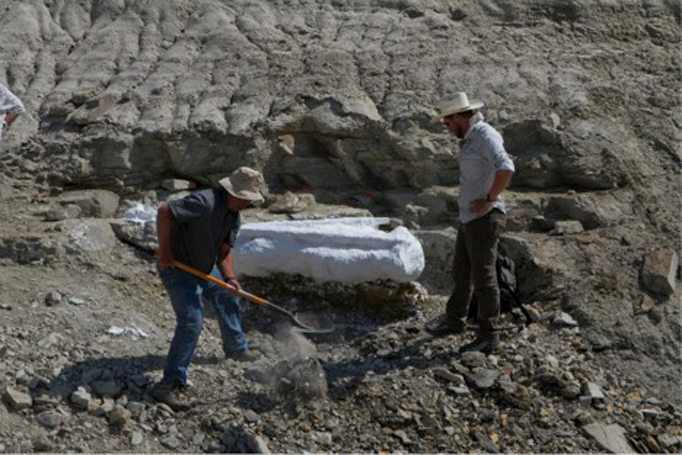 Figure 2: Preparing to flip the hip block in the Milk River Formation. Dr. Corwin Sullivan from the Institute of Vertebrate Paleontology and Paleoanthropology (left) and CMNH Fossil Preparator Lee Hall (right).
Figure 2: Preparing to flip the hip block in the Milk River Formation. Dr. Corwin Sullivan from the Institute of Vertebrate Paleontology and Paleoanthropology (left) and CMNH Fossil Preparator Lee Hall (right).
Our priorities shifted when our colleague, extraordinary fossil finder Wendy Sloboda, joined our crew and quickly located the best finds of the summer. In a geologic formation where fossil material is rare, she found numerous associated bones of a large hadrosaur (duck billed dinosaur). We set to work uncovering the bones, which were like powder at the weathered surface, but luckily hardened as we dug into the hill. We collected numerous ribs and vertebrae, as well as a huge block containing bones from the hip region of the dinosaur.
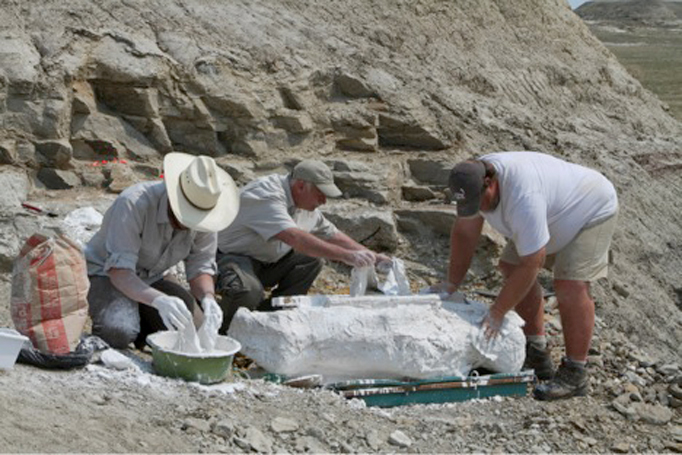 Figure 3: Capping the other side of the hip block with burlap strips dipped in plaster. Left to right: Lee Hall (CMNH), Dr. Don Brinkman (Royal Tyrrell Museum), Dr. Michael Ryan (CMNH).
Figure 3: Capping the other side of the hip block with burlap strips dipped in plaster. Left to right: Lee Hall (CMNH), Dr. Don Brinkman (Royal Tyrrell Museum), Dr. Michael Ryan (CMNH).
Wendy also found a beautifully articulated hadrosaur skeleton at a different locality in the Oldman Formation. As the crew meticulously excavated the bones (many of which were in life position), we discovered 22 vertebra lined up in a row, as well as ribs, hip bones and limb bones. Articulated dinosaurs are rare, making this a very exciting find! Before removing bones from the ground we record data about each bone including length, orientation, depth and dip. We also create a quarry map, using a 1x1 meter grid square. Once the data had been collected, we trench around the bones and encase them in a field jacket, made up of burlap and plaster. We were not able to uncover the entire animal this summer and will return to it next summer. With luck, we will find the rest of the skeleton, including the skull, continuing into the hill.
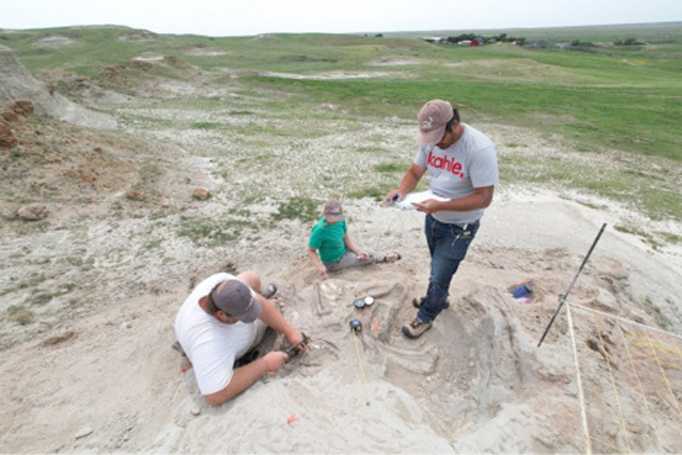 Figure 4: Recording data in the quarry using a tape measure, compass and grid square, before removing the hadrosaur bones from the ground. Left to right: Dr. Michael Ryan (CMNH), Amanda McGee (CMNH), and Kentaro Chiba (University of Toronto).
Figure 4: Recording data in the quarry using a tape measure, compass and grid square, before removing the hadrosaur bones from the ground. Left to right: Dr. Michael Ryan (CMNH), Amanda McGee (CMNH), and Kentaro Chiba (University of Toronto).
Besides the phenomenal hadrosaur quarries, we also started working a tyrannosaur site that was found by a local Albertan and his son a few summers ago. This
Daspletosaurus quarry is another one we will be returning to next year, but in the short time we worked the site we uncovered vertebrae, ribs, teeth, and most excitingly, diagnostic skull bones!
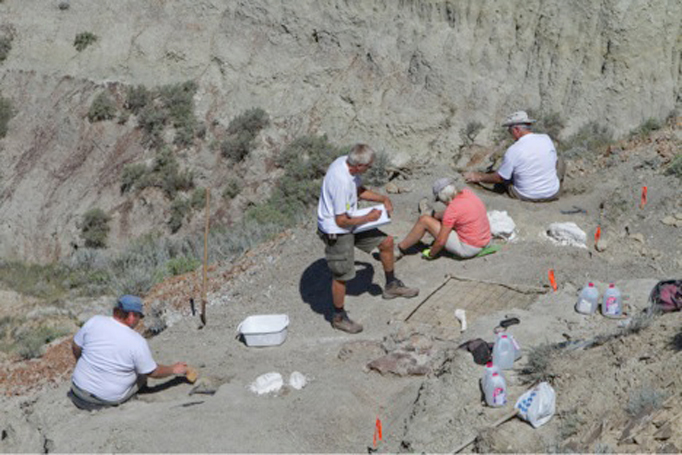 Figure 5: Excavating and mapping skeletal elements in the tyrannosaur quarry. Left to right: Dr. Michael Ryan (CMNH), Drs. Phil Currie & Eva Koppelhus (University of Alberta), Al Rasmuson (Executive Director, Dinosaur Research Institute).
Figure 5: Excavating and mapping skeletal elements in the tyrannosaur quarry. Left to right: Dr. Michael Ryan (CMNH), Drs. Phil Currie & Eva Koppelhus (University of Alberta), Al Rasmuson (Executive Director, Dinosaur Research Institute).
In the evenings, after the dinner dishes were cleaned and put away, the crew would spend time catching up on field notes, reading scientific papers, or getting tools and supplies ready for the next day. The all-important task of cataloging the fossils also happens in the evenings. Each fossil is given a field number, and all the information associated with the specimen is recorded in a database including its identification, locality information, geologic context, who collected it, the date and any other relevant information.
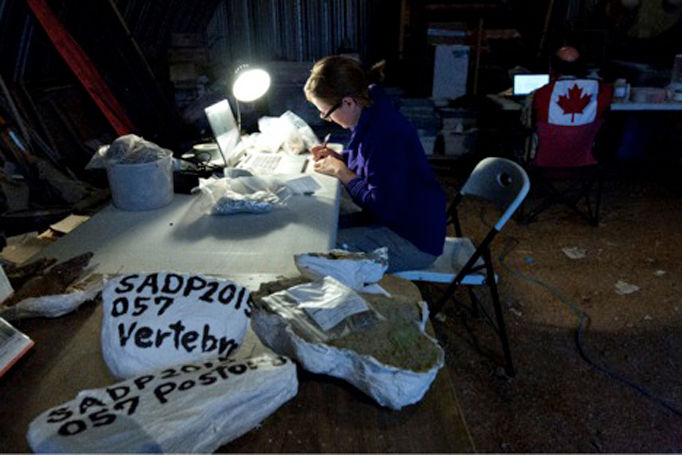 Figure 6: CMNH Collections Manager, Amanda McGee, cataloging the fossils at the end of the day.
Figure 6: CMNH Collections Manager, Amanda McGee, cataloging the fossils at the end of the day.
With the exception of the occasional thunderstorm and one hailstorm, which claimed a single tent as a casualty, we had exceptional weather. Even the bugs cooperated this year; minimal mosquitoes and ticks! In addition to the quarries that we worked this year, we surface-collected a bunch of interesting specimens while prospecting, including bones and teeth from various dinosaurs, turtles, crocodiles, amphibians, as well as some dinosaur eggshell fragments. All in all, it was a very productive summer for SADP and next year’s field season holds a lot of potential!
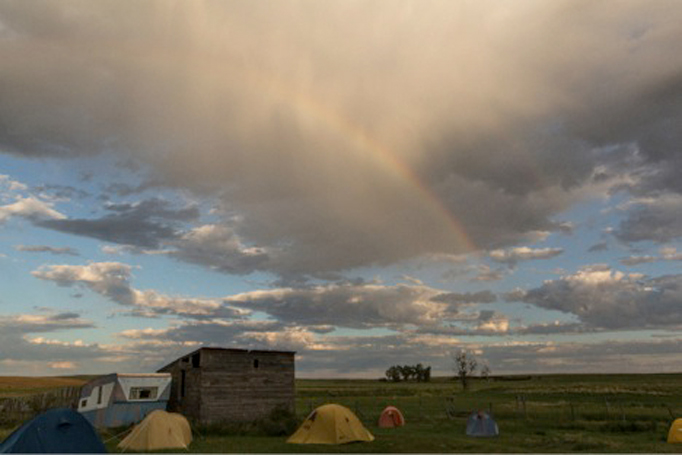 Figure 7: “Tent city” after a thunderstorm.
Figure 7: “Tent city” after a thunderstorm.
See more
recent blog posts from the Museum.